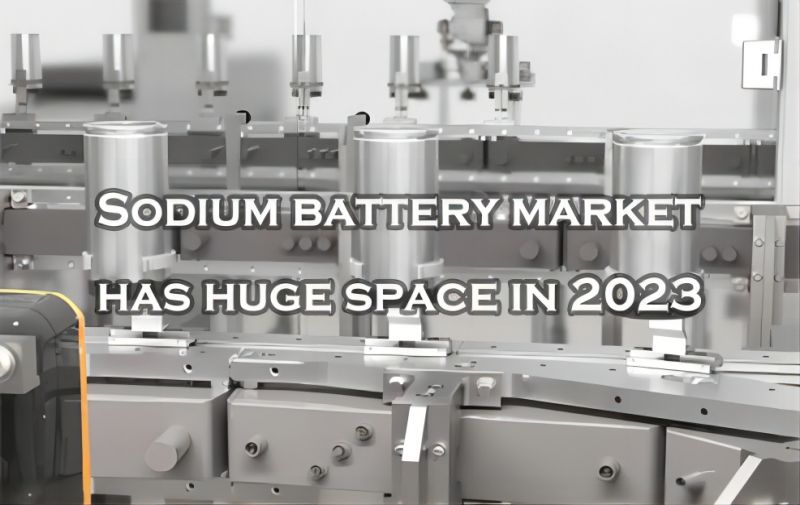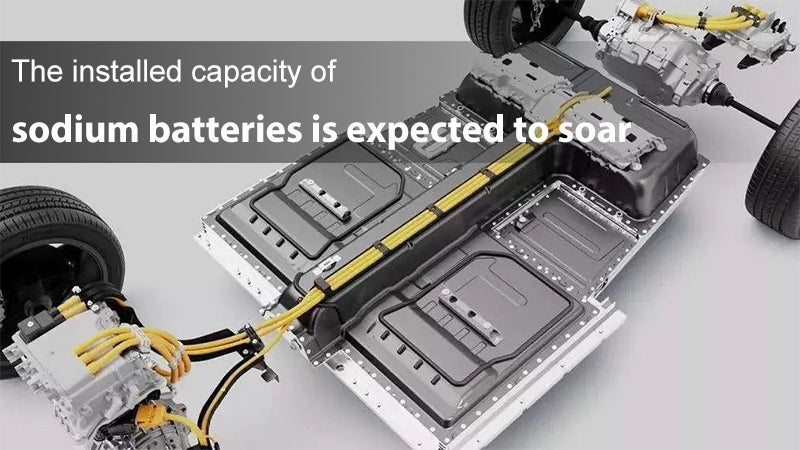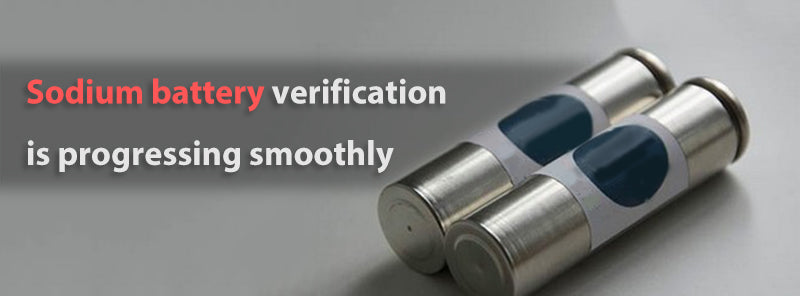
Main content:
2023 is seen as the year for sodium batteries. According to the data, the sodium battery sample test is progressing smoothly, and the market space for sodium batteries in 2023 may be 5.9GWh. Information learned from the sodium battery industry chain shows that sodium batteries are expected to begin to increase in the second half of next year.
Among them, A0 car companies have a strong idea of advancing, and there are two-wheelers, which are expected to be loaded into mass production applications next year. Ronbay expects to have a production capacity of 36,000 tons/year of layered oxide cathode materials by 2023.
The installed capacity of sodium batteries is expected to soar
According to the data, the total demand forecast for sodium batteries in 2023 is 5.90GWh. The database divides demand statistics into three aspects, namely the two-wheeler market, the low-speed four-wheeler market and the world energy storage market. Among them, the electric two-wheeled vehicle market in 2023 is calculated based on the sales volume of 60.6 million units and the electric capacity of a single vehicle is 0.75KWh. You can read our article top 10 two-wheeled vehicle lithium battery companies and find out these companies are mature in this industry.
The total demand for power batteries is 45.45GWh. If the penetration rate of sodium batteries is 5%, the demand for sodium batteries for two-wheeled vehicles will reach amount of 2.27GWh. The demand for sodium batteries for low-speed four-wheel vehicles is predicted to be 0.72GWh. The premise is that the sales of A00 electric vehicles will reach 1.7228 million in 2023, and the electric capacity of single vehicles will be 21Kwh. The demand for power batteries is 36.20GWh, and the penetration rate of sodium batteries is 2%. calculate.

In terms of the world energy storage market, the predicted penetration rates are 1%, 1%, 3%, and 3% according to pre-meter energy storage, industrial and commercial allocation storage, household energy storage, and communication base station allocation respectively. Battery demand totaled 2.90GWh. Based on this statistics, the demand for sodium batteries in 2023 will total 5.90GWh. More brokerages predict the demand for sodium batteries in 2025. Experts predict that the world's demand for sodium-ion batteries will be about 67.4GWh in 2025.
Compared with the predictions of the capital market, battery factories may pay more attention to actual operations. Another cathode material factory said that at present, it has to wait for the vehicle factory to conduct winter testing, and the data collection may be completed after the first half of next year. It is expected that the volume will gradually increase in the second half of next year, but it should not be very large at the beginning.
Sodium battery verification is progressing smoothly
The factories in China's sodium battery sector are mainly divided into three parts: one is traditional lithium battery companies, such as CARL, Great Power and Farasis. The second is the new layout of sodium battery factories, such as Transart Technology, Veken Technology, Zhongke Haina, etc. The third is material extension companies, such as DFD. According to the data, the energy density and cycle times of sodium batteries are far behind those of lithium iron phosphate batteries, but the low-temperature performance has recovered a bit.

The former two are still being improved, and the latter is determined by the characteristics of the material system. At present, Great Power said that the research and development of the company's sodium-ion batteries is progressing well, and the battery performance test results are relatively satisfactory, including cycle, low temperature and energy density. Shangtong Wuling is very interested in the excellent low-temperature performance of sodium ions, and believes that it will solve the problem of poor user experience in winter.
DFD's sodium-ion batteries have already rolled off the production line in batches, are undergoing various evaluations, and are currently preparing to expand batch production. At this stage, the subsidiary Jiaozuo New Energy has a production capacity of 1GWh of sodium batteries, and the subsidiary Guangxi Ningfu New Energy plans to have a production capacity of 5GWh. But on the other hand, the battery cost of sodium ion is 30% lower than the current mainstream lithium iron phosphate battery.
In this regard, people from battery factories analyzed that the theoretical material cost of sodium batteries is low, but the number of upstream raw material manufacturers is currently small, the scale is not high, and the actual cost has not yet fallen to the theoretical cost. Furthermore, production capacity climbing is inevitable, and the unit production cost is also high.
As for the current cost of sodium batteries is higher than that of lithium iron phosphate batteries, but the performance is not as good as that, why OEMs are still willing to install cars, further analysis, the current price of sodium batteries is high but the quantity is small, the total cost is actually not much, but mass production The speed of cost reduction will be very fast, especially for ternary manufacturers, there is no need for repeated investment in the production line, and the upper, middle and lower parties will share the calculation together, which is almost negligible.

Cathode materials and electrolytes are the focus
DFD said that the market size of sodium-ion batteries in the future depends on factors such as market demand, manufacturing cost reduction, technological progress, and industrial chain supporting speed. In the cost structure of sodium batteries, the electrolyte and cathode materials account for the largest proportion.
At present, the BOM costs of sodium-ion batteries are separated from each other, and the electrolyte is relatively expensive, so the development of a cheap electrolyte is a part of cost reduction. The industrialization of sodium electricity is expected to speed up, and the cathode is the key link. Compared with lithium batteries, the core changes of sodium batteries are concentrated in the positive electrode and negative electrode. If you want to know their differences, here is a good article lithium vs sodium battery for you.
Among them, the industrialization prospect of hard carbon in the negative electrode technology route is relatively clear, while there are three optional routes for the positive electrode: layered oxide, polyanion type, and Prussian white. The path of industrialization is relatively complex and diverse. Since the theoretical specific capacity of the positive electrode material is relatively low, and some routes contain scarce metal elements, the positive electrode plays a decisive role in the energy density and manufacturing cost of the battery.
In addition, different application scenarios also have different requirements for battery cycle performance, and the cycle performance of different cathode technology routes is quite different. On the whole, the layered oxide route has the greatest potential for energy density development, and has good rate and low temperature performance, but the cycle life is relatively low. The polyanion route has the highest cycle life and strong structural stability, but the energy density is relatively low. The Prussian white route has the best theoretical gram capacity and rate performance, but currently has the lowest cycle life and compacted density.
Summary
Similar to lithium batteries, the main cost of the electrolyte comes from the electrolyte, while the electrolyte of the sodium battery is mainly sodium hexafluorophosphate. At present, DFD's sodium hexafluorophosphate has a thousand-ton production capacity, and related sodium-ion battery companies are also using the company's products. DFD's sodium-ion batteries have been produced in batches and are undergoing various offline evaluations.
It is expected that next year can be loaded into mass production applications. Ronbay and Zhenhua are active manufacturers of cathode materials for sodium batteries. The company has many years of technical accumulation in sodium electric materials, and has reserves of two mainstream technologies, especially on layered oxides.
At present, it has received orders of tens of tons per month, and the company has cooperated with mainstream customers and stable shipments. The company plans to reach monthly shipments of kilotons by 2023. It is estimated that the production capacity of layered oxide cathode materials will be 36,000 tons/year by 2023 and 100,000 tons/year by the end of 2024.
Related article: top10 sodium-ion battery companies, electrochemical energy storage, top 5 fast charge battery material companies in China